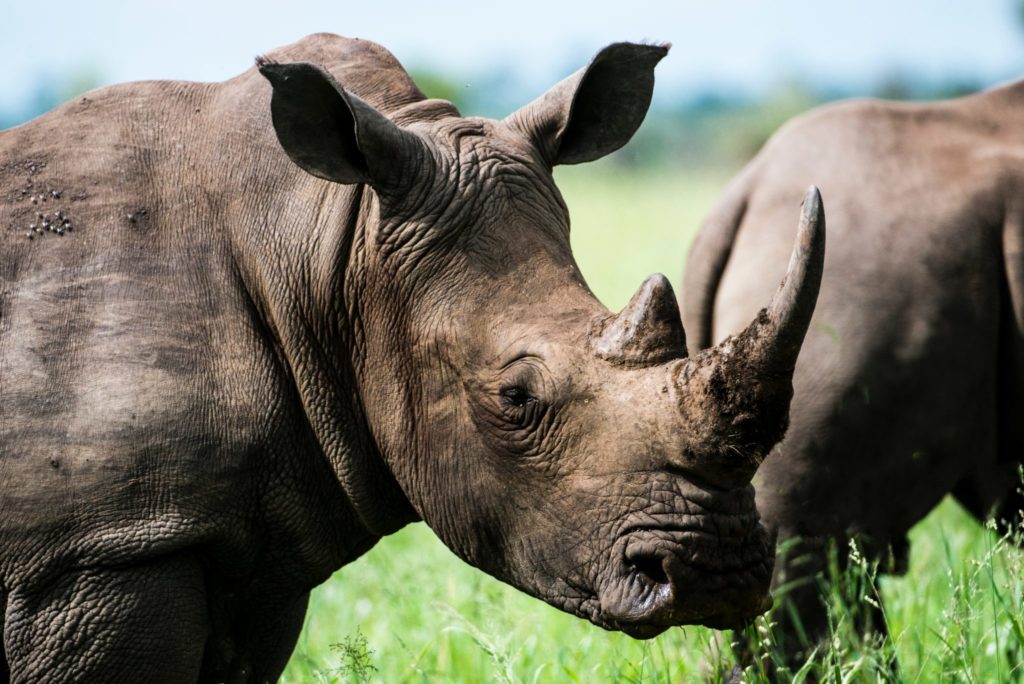 What if you could use the skills from your day job to fight crime and make the world a better place?
What if you could use the skills from your day job to fight crime and make the world a better place?
College of Business Department of Management Associate Professor John Macdonald is doing just that. Drawing on his expertise in helping companies recover from supply chain disruptions, he’s researching ways to detect and dismantle illegal wildlife trafficking networks.
The research is funded by a three-year, $809,000 grant from the National Science Foundation that will allow Macdonald and an interdisciplinary team from several universities around the United States to study wildlife trafficking supply chains and the ways business strategies and methods can be used to disrupt them.
The Business of Environmental Crime
Trafficking protected wildlife species is big business in the global economy. The estimated global economic value of transnational environmental crime—the illegal procurement, transportation and distribution of natural resources across international borders—is between $91 billion and $259 billion per year, according to the United Nations. Of that, wildlife trafficking accounts for $7 billion to $23 billion annually.
Trafficking also contributes to the decline of crucial animal and plant species at a time when these species are already threatened by habitat loss and overexploitation. In addition, it can contribute to the spread of disease, as the recent outbreak of a new coronavirus in Wuhan, China, demonstrates. Authorities have traced the suspected source of the outbreak to a market selling wild animals and meat, according to a report from the Wall Street Journal.
Although the economic and environmental effects of wildlife trafficking are huge, there is little understanding of the structure and processes behind it.

“Wildlife trafficking has more gray areas than human trafficking,” Macdonald said. “Hunting wildlife is legal in some scenarios and illegal in others, and the punishments are likely different across countries.”
For example, in some areas of Africa it’s legal for rural communities to hunt protected animal species for subsistence, but it’s illegal for them to over-hunt those species and sell that meat in urban areas for income. These sometimes blurry lines between legal and illegal activity make it difficult to detect and prevent wildlife trafficking. Macdonald and his colleagues, who work in wildlife conservation and supply chain management at Michigan State University, operations research at the University of Alabama and computer science/artificial intelligence at the University of Southern California and Harvard University, are hoping their expertise can both shed light on and disrupt these complex trafficking networks.
Masking the Illegal
For many people, illegal wildlife trafficking conjures up images of caged animals transported by small boats and cars in the dead of night. And although that does happen, Macdonald says the reality is often much more mundane—illegal traffickers frequently hide their actions by using legal supply chains and delivery processes.
“Traffickers use the supply network that all of us know, the one we use to get our own packages when we order online,” he said.
Using legal supply chains to mask illicit activity makes it difficult to locate, track and dismantle illegal networks. Armed with local police reports and other data, Macdonald and his fellow researchers will map these legal entry points for illegal traffickers in Africa to determine where the trafficked items are coming from and where they’re going. They will also study key decision points in illegal supply chains, behavioral patterns of participants and links between each part of the network. The research team will propose enforcement solutions to governments and agencies that would make it easier to discover illegal trafficking operations and, at the same time, make those operations riskier and less profitable.
“Once we figure out what the network looks like, we intend to overlay a structure of interdiction on the network,” Macdonald said.
The team will also try to determine where wildlife traffickers go when governments and law enforcement agencies cut off access to one point of export.
“If you clamp down on one port, how do the networks change?” Macdonald said. “If enforcement occurs here, they’ll go there, so do we need to enforce both simultaneously? Or does the enforcement in one area create enough risk to already deter some people?”

Breaking the Chain
Through their research, the team will complete a supply chain map of wildlife trafficking, develop a strategic framework for interdiction options and then build disruption and enforcement models that can be used by agencies with limited resources.
The team is hoping enforcement agencies in countries where trafficked animals originate will use this research to disrupt illegal supply chains, but Macdonald acknowledges that can be complicated in some countries. Preventing trafficking in economically disadvantaged areas can be challenging because participating in trafficking can help struggling families support themselves.
“Imagine you’re a logistics worker in Africa,” Macdonald said. “Someone comes to you with a package and says they’ll triple your monthly salary if you let this package through. You don’t know what’s in it. But you’re not making much money, and with this extra money you can feed your kids. So you let the package go.”
Despite the challenges, the team is hopeful that its research can help reduce wildlife trafficking and preserve biodiversity throughout the world.
“This research can be disheartening, but I have to remind myself that there are a lot of good people in the world working on this problem,” Macdonald said. “For the bad actors, they’re making a conscious choice to exploit the environment. But for many others, it’s the difference between having food on the table and not. Every step toward a solution is encouraging.”